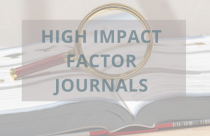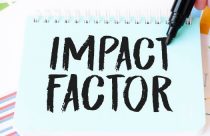Does Journal Growth Negatively Influence Its Impact Factor?

Have you recently published your work in a high-impact-factor journal? If yes, then congratulations! It is a huge accomplishment and also a cause for celebration.
Clarivate Analytics and SCImago rank journals according to the number of times their articles have been cited. Journals with a higher citation frequency have a higher “journal impact factor” (JIF). This automatically confers higher prestige to them. Researchers assume that a higher frequency of citations directly correlates with a higher quality of research. Factors such as a journal growth are not necessarily related to the quality of research work. Can they influence citation metrics?
What Affects Citation Metrics?
The most commonly used measure of citation performance is the JIF, calculated by Clarivate Analytics and published on the Web Of Science. It uses the average number of citations from the citable articles published in the journal in the previous two years. Scopus publishes a similar ranking score called CiteScore Metric. This calculates the average citations over the previous three years for a journal. Scopus releases these statistics annually and helps researchers track a journal’s performance over time.
Apart from the prestige, publishing your work in a high-impact-factor journal could mean better funding and career opportunities.
There are several factors that affect a journal’s citation performance score:
- Article type: Review articles tend to get more citations than substantive research articles.
- Type of discipline: Researchers working in certain areas take longer to produce research. Therefore these researchers may not be cited within the two or three-year assessment period. Furthermore, some areas have larger research communities. For example, medical journals have higher impact factors than mathematics journals.
- Language: Researchers do not cite non-English journals as much as those published in English. Therefore, non-English journals tend to have lower scores.
- Number of articles published: If two journals receive the same number of citations, but one publishes a higher number of articles, the latter’s citation score will be diluted, thereby lowering its rank.
- Timing: Impact factors are calculated using an annual metric system. Therefore, articles published in December, do not get as much time to earn citations as those published in previous months.
How Journal Growth Negatively Impacts Citation Performance
It is a game of statistics. Because the impact factor is based on the number of articles published, increasing this number can affect a journal’s score. A journal that undergoes rapid growth could go down in rankings. This is because although the journal is publishing more citable papers, these papers would not have had enough time to gain citations in the two- or three-year citation period. As an example, let us try comparing an article published in 2018 to another published in 2015. We would immediately realize that the former would not have an opportunity to get as many citations as the latter.
No doubt this will even out in subsequent years, but it may have a knock-on effect.
Researchers may submit their paper to a competing journal first, purely because it has a slightly higher impact factor.
Journal Growth Does Not Always Cause a Drop in JIF
A PLOS ONE study analyzing JIF changes concluded that a change in the number of articles published by a journal could affect its citation performance score. Although the statistics may be against journals looking for expansion, a decrease in rankings will most likely be short-term.
In contrast to the above, decreasing the number of articles does not always result in a higher rank. In 1997, the journal Lancet split its “Letters” section into “Correspondence” and “Research Letters.” As a result, the JIF decreased from 17 to 12 because of a decrease in the number of the citable articles.
What is your opinion on the relationship between journal growth and journal impact factor? Let us know your thoughts in the comments section below.









